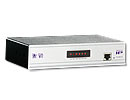'ZDNET Recommends': What exactly does it mean?
ZDNET's recommendations are based on many hours of testing, research, and comparison shopping. We gather data from the best available sources, including vendor and retailer listings as well as other relevant and independent reviews sites. And we pore over customer reviews to find out what matters to real people who already own and use the products and services we’re assessing.
When you click through from our site to a retailer and buy a product or service, we may earn affiliate commissions. This helps support our work, but does not affect what we cover or how, and it does not affect the price you pay. Neither ZDNET nor the author are compensated for these independent reviews. Indeed, we follow strict guidelines that ensure our editorial content is never influenced by advertisers.
ZDNET's editorial team writes on behalf of you, our reader. Our goal is to deliver the most accurate information and the most knowledgeable advice possible in order to help you make smarter buying decisions on tech gear and a wide array of products and services. Our editors thoroughly review and fact-check every article to ensure that our content meets the highest standards. If we have made an error or published misleading information, we will correct or clarify the article. If you see inaccuracies in our content, please report the mistake via this form.
Adderlink IP


Adderlink IP
pros and cons
- No software needed on remote servers uses open-standard software OS-independent
- Mouse needs calibrating occasionally maximum transmittable desktop resolution is 1,280 by 1,024
Managing servers remotely (which is most of the time) has become a lot easier with the advent of stable, standard software such as VNC (Virtual Network Computing), which provides remote control simply and -- best of all -- for free. But there's one drawback: if the machine you're controlling should crash, you lose all contact with it. If the server is just down the corridor, that's a pain but you can live with it. If it's on the other side of the country or in another continent, it's a major headache. Until now.
Adderlink IP fills the gap between KVM (Keyboard, Video, Mouse) switches, which generally work only over short distances, and protocols such as VNC, which require the machine to be up and running before they become effective. The device works like a local KVM from the point of view of the server, but it also contains a VNC server to which you can connect over IP.
What this means is that you can log into it from anywhere and take charge of the machine(s) it's controlling. It also has the advantage of not needing software to be loaded onto the server itself.
The Adderlink IP can connect directly to a server or to a cascade of KVMs managing a server farm. In this case, you will need a way of controlling, via software, which machine the KVMs select -- there's no remote control arm to hit a button on the front of the box.
Setting it up is simple enough. You enter an IP address and password, and that's pretty much it. You can pre-configure the box to pass given key sequences on the downstream KVMs -- we used Ctrl-Alt-Shift-n, where n is the number of the machine to switch to -- and that worked perfectly.
Because it hooks into the video stream, you can watch the machine reboot if necessary, and even control the power using the built-in RS-232 port, provided you've got it hooked up through an appropriate power box. There's a phone line too as backup, so if the IP link fails, you retain control.
In practice, the Adderlink IP works very well, with only the occasional loss of synchronisation between the remote and local mouse cursors, which is easily fixed using the built-in resync button.
Top ZDNET Reviews
You access the unit in one of three ways: you can use an existing VNC installation; you can download a viewer from the box; or you can simply point your browser at the box's IP address, which fires up a Java-VNC viewer.